|
Derived from ethyl alcohol, ether was a sweet-smelling, colorless liquid that came into medical prominence in the nineteenth century. When vaporized and inhaled, it produced varying degrees of unconsciousness. First employed as a general anesthetic by American doctors in the 1840s, its popularity quickly spread to Victorian England. But ether wasn’t only used during surgeries. It was also used recreationally, as well as to address myriad calamities of life in ways that ranged from the mundane to the outright creepy. The 1897 edition of A Manual of Medical Jurisprudence reports the case of a newlywed Victorian lady who went into hysterics whenever her husband tried to initiate sex. As a result, the consummation of their marriage was “long delayed.” According to the report:
1 Comment
Irene Carstairs is a historian based in Tirana, Albania. She runs “That History Nerd,” a history blog dedicated to dusting off the ephemera of history and bringing it to life. She is particularly interested in women, the middle ages, and women in the middle ages. You can find her work at www.thathistorynerd, and find her on twitter at @CarstairsIrene 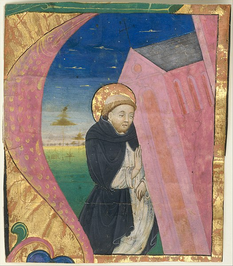 Of all the political superpowers of the Middle Ages, the Catholic Church reigned supreme. Despite having no standing army of its own, and occupying only a small portion of the Italian peninsula, the Church had immense control over Western Europe. People of the Middle Ages had a great concern for the fate of the soul after death, and as the gatekeepers to a non-hellfire and brimstone filled afterlife, the Catholic Church held more power than any individual king. However, getting and keeping power was difficult. In an era where military might was everything, a small country reliant on mercenaries and foreign friends wouldn’t stand for very long against any invading force. So, lacking swords, the Church turned to sin and penance to keep Europe in line.
In the early centuries of Christianity what was and what wasn’t a sin was a bit unclear, and while there were definitely behaviours defined as sins in biblical teachings, more activities came to be sinful through later Church teachings. Most sexual behaviours became mortal sins that would damn the soul to an eternity of suffering if not repented of. The only way to repentance was through confession and doing penance, something that was only possible with a church official.  Jon Sleigh is an arts educator and learning curator. Recent working includes three years with the Arts Council Collection National Partners Program based at Birmingham Museums Trust. Jon now works across the country with diverse galleries / collections and writes for national publications on art history and theory. E: [email protected] T: jon_sleigh W: https://jonsleighfreelance.wixsite.com/about Its 1632. One of the most beautiful and controversial figures of the age lies dying of breast and uterine cancer. Local minister Arthur Wilson records the deathbed scene – Frances Carr, Countess of Somerset was “ killed by a disease of the below parts” and “died in “very great extremity….that part of her body which had been the receptacle of most her sin grown rotten (though she never had but one child) the ligaments falling, it fell down and was cut away in flakes, with a most nauseous and putrid savour which, to argument, she would roll herself in her own ordure in her bed, took delight in it”. (1) The horrific relish Wilson takes in describing an agonising death is truly shocking. You can almost hear the bile in his voice as he labours not only on her suffering, but that she found sexual pleasure in her pain. How did her contemporaries find it so easy to not only dehumanise her, but to ascribe extreme sexual pleasure to even the act of dying? Let’s meet Frances and unwrap the patriarchy and sex shaming around her life and times. Who was this “filthy woman…lewd and malicious”? (2) Frances was born into the powerful aristocracy of the Howard family. Raised in court intrigue, amid power-broking politics in which you lived or died, the contemporary chronicles reveal the emergence of a very contemporary woman. She was confident, privileged, literate and had the ability to exercise a voice. Her journey to adulthood also coincided with the reign of king James VI and I, and the perceived debauchery of his court. Queen Elizabeth I died in 1603 when Frances was 13, and with her died the matriarchal cult of the virgin. Young men no longer played courtly games of love with a queen in her late 60s, and the sexual tone of court life changed. Gone is the veneration of the virgin and the politics of power vs sexual denial. James I sees an era of financial and sexual excess, pilloried by a later generation of puritans. Bodices on women reached ever lower, to where it became fashionable for court women to appear bare breasted, including exposure down to the areola. Skirts bellowed outward under drum farthingales, emphasised by unnaturally small corseted waistlines – the woman’s body at once enticing yet hard to reach, trapped in a literal cage of wealth. Movement and momentum are severely restricted, women become gilded objects. We see this in the most famous portrait of Frances by William Larkin in the 1610’s. Pursed red lips, heavy cosmetics (a dangerous combination of mercury and lead) and sensual eyes are framed by a sharp yellow ruff. Her bodice plunges downwards as she smiles back at us, directly making eye contact. Art fossilises a moment in time, aristocratic confidence meeting the sexualised fashion of an era. King James himself in contrast to Queen Elizabeth expressed his sexuality publicly through marriage and five legitimate children. Privately, James also enjoyed both romantic and sexual relations with men. He was queer / bisexual to modern interpretation, but James would never have considered himself in these terms as that framework of understanding did not yet exist – sexual licence was a religious and social deviation - a choice made, symptomatic of an evil nature. Puritanism was sharply on the rise in Britain, and within a generation Oliver Cromwell rules and has banned Christmas.  Robert Devereux, 3rd Earl of Essex Robert Devereux, 3rd Earl of Essex “Almost all men spoke of the looseness of her carriage” – anon chronicler (3) At aged 14, Frances has an arranged marriage to the 13-year-old Robert Devereaux, 3rd Earl of Essex. She is framed from the outset in the midst of adult sexual politics, her reputation merging and disappearing into that of the Jacobean court. Arthur Wilson described her thus - “the court was her nest, her father being lord chamberlain, and she was hatched up by her mother whom the sour breath of that age (how justly I know not) had already tainted.” (4). The married couple were kept apart for five years as pregnancy was considered unhealthy for her age. During this time, it is rumoured Frances becomes the lover of Prince Henry Stuart, eldest son of James I. Her beauty was “of the greatest magnitude on the horizon” (5) When Robert returned the marriage proves to be a dynastic triumph, and a personal disaster. Robert is accused of preferring the company of his male friends, and that Frances was sexually uncooperative. In 1613 Essex reports, “when he was willing to have carnal knowledge of her body, she showed herself ready thereof…. some other times she refused it.” (6) A woman raised with confidence and away from her husband’s control echos through these words. Frances petitions for divorce on grounds that the marriage was never consummated and citing impotence in her husband – a powerful step and one that further compounding her association with sexuality. Frances was examined by a group of midwives who found her hymen to be intact, although many suspected the girl being examined was not Frances as she has been veiled throughout 'for modesty.' Frances then quickly moved to marry Robert Carr, Earl of Somerset. Popularly acknowledged as the lover of James I – Carr was similarly demonised as both sexual and powerful, a queer abnormality. At every point in her life – her fashions, her family, her marriages, Frances is framed to us as being highly sexed. “Her beauty caused devastation in the hopes, hearts, estates and understandings” (7) Frances' downfall came with the murder of Sir Thomas Ovebury, chief adviser to her husband. He despised Frances and worked to block her marriage to Carr. Frances in turn saw him as a threat to her politically and to her relationship with her husband. In his efforts to prevent the marriage, Thomas Ovebury offended Carr’s lover king James and was imprisoned in the tower, where he died. It was later revealed that he had been poisoned and suspicion fell on Frances and her new husband. Both were arrested and thrown in the tower. Sensationally, Frances admitted plotting to poison him with her servants' help, but her husband never admitted his involvement. The Countess no longer enjoys the political protection of the king, as he moved to damage limitation. Evidence supports that almost certainly she was instrumental in the death of Ovebury, if not in deed then at least in intention. The Frances and Robert were found guilty and sentenced to death, but were pardoned and kept in custody. The Somersets were ruined. Although they had escaped execution they remained imprisoned in the tower of London until 1622. Upon their release, they found themselves ostracised from society. Her reputation was sealed as not only debauched, but also as evil. But, let’s separate the two and try to see the patriarchy at play. Even before the murder she was condemned as promiscuous. Contemporary chronicler Simon D’Ewes wrote “by this example, as in many others we may see plainly that the conscience being once emasculated and cauterised by lust and whoredom, is then prepared and fitted for the commission of witchcraft, murder or any other villainy.” (8). And of course, if you’re a whore, murder is sure to follow.
As a contemporary arts educator, I would argue we must see Frances the murderer as separate from the demonisation of Frances the women in control of her own sexuality in 17th century Britain. To be part of a political assassination should not be synonymous with being an empowered woman. For me, Frances clearly committed an evil act in killing – yet her contemporaries and indeed history reads this as being the result of her gender and sexuality. Her crime is a vehicle for puritan historians in the 17th century to demonise other women for generations to come. Add to this her husband's sexuality, and enough ammunition is there to destroy not just Frances but to construct an archetype of the lustful, wicked woman that would then be used to punish others. Did her love of contemporary fashion make her kill? Did divorcing a husband she did not want to have sex with make her a killer? Did she murder because she’s a woman? Or did lust drive her to it? No. The act of murder damns her, not her gender or sexuality. Patriarchal faith and political histories have the power to ignore this. Contemporary male murderers were not referred to as “whores”. We must not defend Frances on the charge of murder, but its vial to see her clothes, privilege and sex life in a different light, interlaced with her story but not the de-facto motive. Her contemporaries enjoyed the same pleasures but were not murders. Through this historical filter, later readers across the centuries would have been primed to believe someone capable of murder would indeed enjoy sexually the act of dying in pain – why not? With no feminist counterpoint puritans literally wrote the book. As I consider this historical woman, I’m deeply conflicted. She is at both repellent and fascinating. She cannot be defended, yet she absolutely needs to be understood in the context of her time and gender. Frances offers a valuable light on the expectations of women through history, and the inherited narrative we grow up with on women that’s mostly presented to us through men. I recently stood before her portrait at the National Portrait Gallery by Larkin and pondered this. The murder jars with the glamour of her life at court, the powerful woman vies with the dying record of a woman in agony. Is her smile one of assured sexuality or sly and cunning? Try being with the artwork yourself and see how you feel. It’s a moment both ambiguous, uncomfortable and nuanced. Boyda Johnstone is a teacher, academic, and activist living in Jersey City NJ who has a PhD in medieval literature. She teaches at Borough of Manhattan Community College (CUNY) and has written blogs on feminism, productivity, and late capitalism. You can follow her on twitter at @boydajosa. Who knew that grinding saffron could become a potent metaphor for lesbian sex? Or that the first Arabic lesbian was known to have fallen in love with a Christian woman? These are just some of the magnificant findings I came across this summer when researching a project on medieval Arabic lesbians. Unfortunately, research projects like this one are often beset with access problems and a distortion of original materials by prejudiced, conservative, and western-biased editors. This project crystallizes the alarming rate at which early period materials are vanishing, those which can aid so deeply in the work of challenging reductive models of history. It also underscores the urgency with which we must work to preserve and recover old materials in an academically responsible manner.
Heini-Sofia Alavuo is a Finnish journalist currently living in Greece. She gets inspired by cats, saucy ancient Greek mythology and memes. Twitter: @heinialavuo Generally, we like to to think that society is constantly progressing, and tackling issues that have bothered us since the beginning of humankind. The idea of sexual revolution fits this narrative perfectly – from oppression to liberation we have now entered an era of openness and acceptance. The huge growth of sex toy market seems to prove this – in 2017 it was a $15 billion-dollar industry. Sex toys are mainly marketed for women, so one could think that women’s masturbation has been destigmatized. But, despite the huge variety of sex toys and erotica items, the so called revolutionary factor seems to be missing. Does the sex toy industry actually strive to empower women or is just an illusion? One way to study female sexuality is to examine the sex toy industry and its history.
Rosalynd Rea is an undergrad at Wellesley College in Wellesley, MA currently working on her senior honors thesis The Medieval Slut: Sexual Identities of Medieval Women in the Patriarchal Narratives of the Decameron and Canterbury Tales. She has previously been published with Counterpoint Magazine and her mother’s refrigerator. She hopes this article earns a spot there as well. Find her on Instagram @roz.rea or Twitter @medievalslut. So here’s the situation: you’re young, you’re hot, you’re married, and it’s 1387. Your husband, though rich, is miserly and as such pays little attention to you, instead favoring his counting house and his best friend, the monk who happens to live with you. Your husband, being rich, expects your outward appearance to reflect his own economic situation, but remains inattentive. The dresses you’ve bought to live up to your husband’s expectations will go unpaid for and thus negate any positive reflection they might have been purchased for. Fortunately for you, the monk who lives with you has the hots for you and, as a medieval monk, also has the moral turpitude to turn you from wife to whore. Unfortunately for him, he doesn’t have the funds. He borrows from his best friend (your husband, if you’ve been paying attention) a loan “for the church.” He pays you, you have great sex, you pay off your debt, and your husband is never the wiser. Nor, as it turns out, is he the richer. When your husband asks your monk for the money back your monk responds that he gave it to you to give to him. Well, shit. You claim ignorance and tell your husband to “score it upon my taille” essentially saying to him that you’ll work this debt off in addition to your marital debt. After being paid for sex, you pay another in sex. This is Chaucer’s Shipman’s Tale, and inquiring minds want to know: are you a whore?
Heini-Sofia Alavuo is a Finnish journalist currently living in Greece. She likes to tell stories and make people think - the world is so full of interesting tales, facts and humans. Twitter: @heinialavuo Note: I was surprised to realize how many different kind of myths and versions there are of Lilith in the ancient texts, so it’s good to clarify that this article mainly talks about the tale of Lilith as Adam’s first wife. Without a doubt there’s much more to learn about this fascinating character. The bible tells us that after God had created Earth, its seas winds and mountains, on the sixth day he created man and woman. According to biblical doctrine, all humans share these same ancestors, Adam and Eve. If Eve had not listened to the snake and sinned, we would all still be living in paradise. Why is it that women always seem to ruin everything, in stories written by men? Mercifully, Eve is not the only nasty woman in the creation mythology. According to Jewish tradition, Adam had an ex – Lilith, his first wife. In Genesis 1, God creates both man and woman, but later in Genesis 2 he creates them again, only this time he creates the man first and the woman from the man’s body. A lesser known interpretation of this script is that God created another woman before Eve. This woman isn’t named in the Bible, but medieval Jewish scholars identified her as Lilith – the demonized female character that has had various roles in ancient Judaism texts.  The story goes: The first time God created man and woman he created both of them from the dust of the earth. To God’s devastation they immediately started fighting with each other – when it was time for them to lay together Lilith told Adam she didn’t want to be underneath him. This made Adam mad, and he insisted the woman to obey. Lilith disagreed, because they were created from the same dust, as equals. Adam didn’t listen, so Lilith shouted out loud the true name of God, raised up in the air and disappeared in the sky. ([Alphabet of Sirach] light adaptation Pulakka 2018) It seems that Eve was created from Adam’s rib just so that she wouldn’t be as difficult as the first wife. From the modern point of view Lilith could be praised as a feminist icon – she dared to say no to a man, and even God himself. She demanded equality and walked away from the relationship after she had had enough. Then why hasn’t her story received more attention amongst women who are demanding equality today? The problem lays in the complex infamy of the character. Firstly, in the ancient Babylonian texts, Lilith seems to be depicted as a winged female demon, who attacks pregnant women and infants. She appears only once in the Bible, in Isaiah 34:14, as one of the demons haunting the destroyed Kingdom of Edom. (Sauter, 2018)  Lilith (1887) by John Collier in Southport Atkinson Art Gallery Lilith (1887) by John Collier in Southport Atkinson Art Gallery According to Jewish folklore, Lilith is fierce, seductive female demon, mischievous lady of the night. Talmud, one of the holy books of Judaism, mentions Lilith couple of times. For instance, it gives a word of warning to men, and young boys especially, not to sleep alone at their house. It was told that men sleeping alone will easily get targeted by Lilith’s nightly tricks - accidental nightly ejaculations were a sign of Lilith’s vicious visits. (Pulakka, 2018) Lilith seems to be held responsible for many deplorable or unexplainable occurrences, such as wet dreams, menarche, miscarriages or the high rate of infant mortality. Blaming a demon goddess probably helped people at ancient times to cope with things they couldn’t control. (Gaines, 2018) Obviously Lilith hasn’t been depicted as the most pleasant female character and her attitude towards children only strengthens the image of a reckless, cruel woman: When Lilith had disappeared from the paradise Adam started to cry and told God that the woman who was created for him had disappeared. God decided to send three angels to look for Lilith, and they were supposed to deliver the following message: if Lilith would come back willingly, everything would be all right and her impudence would be forgiven – but if Lilith would refuse to return, she would lose 100 of her children, every day, from this day to eternity. The angels found Lilith in the middle of the Red Sea, where she was mating with demons. When Lilith heard God’s order, she decided to rather kill infants than return. In order to not be drowned in the sea she promised to spare all the children named after these three angels. ([Alphabet of Sirach] light adaptation Pulakka 2018) Some scholars have pointed out that these texts from Alphabet of Sirach were satirical, so the true nature of Lilith can’t be objectively analysed here. While reading many other texts and versions of Lilith it seems to be clear, though, that she has always been intentionally associated with things bad and evil - in all the ancient texts Lilith has been demonized. This is common for many other mythological women who refused to submit to men, like for example the brave Amazons. (Pulakka, 2018) As Adam’s first wife, Lilith is shown as an example of what happens if a woman is not obedient. Some interpretations even claim that Lilith came back to paradise as a snake and persuaded Eve to sin – double the blame on her. It’s hard not to see the story of Lilith as Adam just bitching about his ex – of course she was horrible, who could ever stand a woman who doesn’t find you superior. Maybe Adam even invented the rumours of a baby-killer sex maniac to keep her from returning to the paradise. (Gaines, 2018) It’s salient to point out that these tales were written by men and for men, and no one ever listened to Lilith’s side of the story – maybe she wasn’t as selfish as told. I’m not going to defend a baby-killer, but in all fairness, God’s punishment was bit childish (pun intended). Maybe Lilith was just strong enough not to obey and give up to blackmail, although the price she paid for her freedom was horrible. She never even achieved the equality she longed for. These old texts are a good example of how women were viewed and sometimes still are - as root of all evil if not contained. Lilith is an exaggerated warning of what women will become if you give them too much freedom. Confident and sexual women seem to be demonized even today, and let’s not even talk about how our society treats women who don’t like babies. This is why I think Lilith could be considered as a role model for feminists today. She didn’t choose to be a nasty demon woman, and her story teaches us that standing up for yourself isn’t always easy – even in our time consequences can be harsh. Freedom is still worth it, though, and one day we will all be equal.
Reference list
Heini-Sofia Alavuo Finnish journalist currently living in Greece. Likes to tell stories and make people think - world is so full of interesting tales, facts and humans. Has been writing her first erotica novel for over two years now due to intense background research. Twitter: @heinialavuo CW: Some relatively strong language
Despite the conversion of Finland to Christianity following the Crusades (1095-1271), pagan beliefs about nature spirits, forest Gods and magic persisted amongst the stubborn Finns for a long time – some of which survives even into the 21st century. In their joys and sorrows, people trusted the skills of their wise elders, and in most cases it was an older women who held the knowledge of old stories, myths and mysteries. The customs and myths referred to here were written down in the 19th century, but had existed in oral tradition for centuries. Hester is a HIV/STI surveillance and prevention scientist with a particular interest in syphilis. She developed a interest in both acquired and congenital syphilis though previously studying paleo-epidemiology and the history of medicine at during an MSc in Bioarchaeological and Forensic Anthropology at UCL and then went on to focus on STIs from a more modest stand point through studying Public Health at the London School of Hygiene and Tropical Medicine.
Syphilis is a disease with many negative social connotations and it has a long and complicated history. Syphilis is caused by the bacteria Treponema pallidum and is most commonly transmitted through sexual contact (Romanowski,1999). Therefore, due to its nature of transmission, there has been a large amount of stigma surrounding this disease throughout its history. In Europe and America, syphilis developed parallel to the process of urbanisation and was linked to increases in promiscuity and prostitution that accompanied the development of densely populated areas (Wood,1978). In parts of the developed world during the 19th and 20th centuries, syphilis was more than just a disease, it developed into a social phenomenon which extended far beyond the field of health alone. The negative societal attitudes towards the disease significantly impacted the treatments used and consequently, exercised a great influence on the prevalence during this period (Quétel,1990). Jake Tringali is a writer living in Boston, Massachusetts. Runs rad restaurants. Thrives in a habitat of bars, punk rock shows, and late-night adventures. His book Poems for a Neon Apocalypse will be published in October 2018. He may be found at jakethepoet.wordpress.com. The following poem describes a unique sexual act performed in the 1930s by sex workers, and was first published by Westwood Journal of the Arts in 2016. I sip Campari from your left eye
unclothed, yet inhibited your beauty lies sacred before me more nude than naked I sip Chambord from your right eye the house of madam francis holds appetite and fantasy for this eve’s sinful rites I sip Chartreuse from your left ear now, let’s not be craven shallow dives to wet the tongue aural exploration I sip Vermouth from your right ear your nervous giggles abate my dating needs are fickle in this hellfire club I sip Absinthe from your left nostril be still now, as the flower abides to the bee your petals aflutter I sip Fernet from your right nostril the sting in your nose may feel deceiving, the warmth is friend, not foe I sip Genever from your mouth share with me this eau de vie our lives and lips locked I sip Whiskey from your cloaca you whisper a low sound animalistic my carnal vessel I sip Brandy from your labia your ceremony ends sweet ninth orifice now drunk, and seeking remedy Alexandra Gillgrass is currently in her fourth year at university studying history. She enjoy's writing about all aspects of history but sex and gender in particular have a special place in her heart. There is always something new and exciting to learn when exploring sex and gender and through her blog she hopes to give the most accurate as well as entertaining account of various weird and wonderful events throughout history.
@gillyweed200 Chloe is a final year student of BA Theology at King’s College London, with a particular interest in women in the New Testament. She is currently researching for a dissertation focusing on the story of the ‘sinful woman’ found in Luke 7:36-50. Twitter: @ChloeSheila_ “It seems to me a strange thing, mystifying, that a man like you, can waste his time, on women of her kind.” – this is a criticism of Jesus made by Judas in Norman Jewison’s 1973 film Jesus Christ Superstar (as well as in the musical of the same name). Judas is bemoaning the damage done to Christ’s image for letting Mary touch him, given her profession. It happens to be one of the many examples of media wherein Mary Magdalene is depicted as a sex worker, as well as a love interest for Jesus (Ehrman, 2006, p. 180). Another incredibly controversial example is Martin Scorsese’s 1988 epic, The Last Temptation of Christ, which includes a scene where Jesus waits at the back of a queue of men, who are each paying for some time with Mary. He doesn’t have sex with her, rather he’s there to (somewhat pathetically) plead for her clemency for previously dumping her. Still, it managed to anger a great many people (Ibid., p.181). They were angered further, when later in a vision, Jesus is shown to marry and sleep with Mary.
'The Notorious 1880 Police Raid of the Cross-Dressing Ball at Temperance Hall' by Mimi Matthews4/5/2018 Mimi Matthews is the author of The Pug Who Bit Napoleon: Animal Tales of the 18th and 19th Centuries and A Victorian Lady’s Guide to Fashion and Beauty (Pen and Sword Books, July 2018). She researches and writes on all aspects of nineteenth century history—from animals, art, and etiquette to fashion, beauty, feminism, and law. Her scrupulously cited articles have been published on various academic and history sites, including the Victorian Web and the Journal of Victorian Culture, and are also syndicated weekly at BUST Magazine.
When not writing historical non-fiction, Mimi authors exquisitely proper Victorian romance novels with dark, brooding heroes and intelligent, pragmatic heroines. She is a member of Romance Writers of America (PAN), The Beau Monde, Savvy Authors, and English Historical Fiction Authors. Her bestselling debut Victorian romance The Lost Letter was released in September 2017. In 1981, Gayle Rubin, an American feminist, lesbian and sexual minorities’ rights activist, first published her text The Leather Menace: Comments on Politics and S/M. It appeared in a famous collection Coming to Power: Writings and Graphics on Lesbian S/M, brought to print by lesbian collective Samois. The titular “leather menace” was an obvious allusion to the term “the lavender menace”, first used in 1969 by Betty Friedman to brand lesbians active in the women’s movement, seen by her as posing a danger to the feminist cause.
Interview with the Dr Victoria Hartmaan, the Director of the Las Vegas Erotic Heritage Museum1/26/2018  The Las Vegas Erotic Heritage Museum is the world's largest erotic museum and Las Vegas's Sexiest Landmark since 2008! The museum was voted Thrillist 'Top Museum in Vegas 2017' and voted Trip Expert's 'Experts Choice Award 2017'. You can follow them at @EroticMuseumLV. The Executive Director of the Las Vegas Erotica Museum is Dr. Victoria Hartmann. Dr Hartmaan is also a Board Certified Clinical Sexologist in Las Vegas, Nevada. Her experience includes providing therapeutic and educational services at rape crisis centres, academic environments, medical centres, and in private practice. You can follow her at @DoctorVictoria 1: The Erotic Heritage Museum was founded by a Preacher (the Rev. Ted McIlvenna) and a Pornographer (Harry Mohney). This seems like a very unlikely partnership. How did this happen and does their partnership still influence the museum today?  In 1962, the United Methodist Church, in cooperation with the United Church of Christ, the United Presbyterian Church, the American Baptist Church and the Southern Presbyterian Church, commissioned a study of the nature and needs of persons in early adulthood. Four cities were chosen to field the study, and The Rev. Ted Mcllvenna, a United Methodist minister with considerable social research background, was chosen to direct the San Francisco arm of the project. The issue of sexual identity, especially homosexuality, was a primary area of the project's research. The main conclusion of the findings was that one cannot understand homosexuality without understanding human sexuality. Further consultations were held at the Institute for Sex Research in Bloomington, Indiana; at the headquarters of the United Methodist Church in Nashville, Tennessee; at the National Institutes of Mental Health in Washington, D.C.; and in London, England, with representatives from the Dutch Ministry of Culture, World Council of Churches, the British Department of Health, a representative from the Vatican, a Bishop of the Church of England, a representative of the French Ministry of Health and five delegates from the United States. At the London meeting, it was decided that persons in the helping professions were woefully lacking in knowledge about human sexuality and that a center specifically designed for training professionals should be initiated. You can follow Rebecca at @beckshasenauer 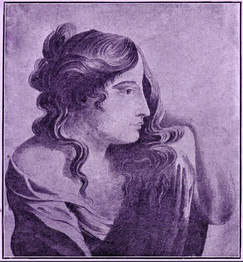 Emma Lady Hamilton (1765 – 1815) - earliest amateur sketch by Miss Thomas (daughter of her first employer) at Hawarden. Emma Lady Hamilton (1765 – 1815) - earliest amateur sketch by Miss Thomas (daughter of her first employer) at Hawarden. The first known portrait of Emma, Lady Hamilton was sketched by the daughter of a local doctor in Hawarden, Wales, when Emma was 12 years old. The little subject would become possibly the most sketched woman of her time. Paintings of Emma document her journey through the stages of nurse-maid, domestic mistress, famed ambassadress and to the notorious whore she would become. Hers would become a life recorded through portraiture. Robert Stewart has collected vintage erotica & ephemera (photos, movies, art, writing) since 2002. Robert is the proprietor and archivist of DeltaofVenus.com, an online subscription-based archive of historical erotica. As well as collecting, Robert does his own restoration & digital transfers of erotic historical media - especially antique newsreels, and early 20th century photos. When he's not curating and one of the largest repositories of online historic erotica, Rob enjoys consulting, gardening, and social work. You can find Robert peddling smut & history at various online locales like Twitter at @Delta_ofVenus. 1: How did you start collecting vintage pornography? 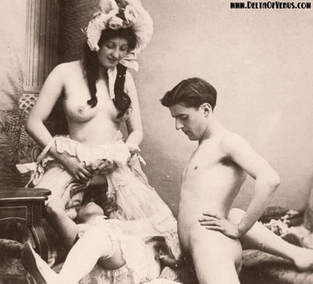 It started as a chance find of erotic photos at an estate sale. That gave me the treasure-hunting bug that comes with this hobby because they were literally tucked in a corner somewhere in an unmarked bag or cardboard box. Any collector – of anything really – knows how addictive that endorphin kick can be. In college, I used some of that material as a springboard for projects examining antique erotica as a form of “folk art”. There was lot of curiosity and intrigue about the collection even then, which got the gears turning about how I could present it publicly someday. Afterwards college, I lived in Portland, Oregon, and have to give a shout-out to a wonderful underground book/zine/smut shop there called Counter Media. They had not only thousands of smut mags from the 1940s through the 70s, but binders packed with antique erotica for sale from both nineteenth & twentieth centuries. It was such a great store, and a sad casualty of the recent gentrification wave that's swept the city, which is a real drag because there are so few places like it, anywhere. Being able to browse & purchase that stuff via retail in my area was a huge help. I probably owe them the most for getting the collection rolling. Learning how to work with and restore film reels & projectors, do digital transfers, etc, came a bit later. That was the final key to starting Delta of Venus. ‘British Institution’ or ‘British Scandal’: Spouse-Selling in Victorian Britain by Lauren Padgett12/2/2017 Lauren started her doctoral studies with the Leeds Centre for Victorian Studies at Leeds Trinity University in September 2014. Her research explores representations of Victorian women in museum displays in the Yorkshire and Humber region. Her wider research interests include hidden histories in museum displays and collections, and Bradford's local history. Lauren has a particular interest in Victorian wife-selling in the Yorkshire region, which she has presented and published on. She is also interested in how object handling and museums (via fieldwork and site visits) can enhance and aid Higher Education pedagogy. You can follow her at @LaurenPadgett24 ..................................... After months of promise and disappointment (sorry Kate), I have finally written a blog for Whores of Yore. I had put my spouse-selling research to one side for a while to focus on my doctoral studies. Revisiting this research has been an absolute pleasure so I would like to thank Kate for this opportunity. This blog will hopefully introduce you to the fascinating, curious and intriguing ‘British institution’ or ‘British Scandal’ of spouse-selling in Victorian Britain.(1) .......................................... A wife has a halter around her neck, and her husband is holding the end of it as they walk towards the marketplace. Once there, she stands on a raised block and a bustling crowd surrounds her, drawn by the sound of a bellman signalling their arrival. An auctioneer announces the sale of this wife and starts taking bids from men in the crowd. After several bids, some made in jest, a genuine highest bidder is found. ‘Going once, going twice, sold!’. The buyer shakes the husband’s hand, gives him the agreed amount and takes the end of the halter from him. The buyer (or new husband) walks away with his newly purchased wife to the crowd’s cheers, while the seller (ex-husband) walks away with his money lining his pocket.
Which country do you think this scene took place in? Which period or century did this take place in? Would you be surprised to know that this scene occurred in Victorian Britain? Jan is a cultural anthropologist currently working on a masters thesis about Polish BDSM communities at the Institute of Polish Culture (University of Warsaw). Jan's research focuses on the history and culture of sadism and masochism/BDSM, and by extension history of perversion in Western culture. In 1757, writing on issue of ever-increasing amounts of tea leaf being imported into Britain, English essayist and known eccentric Jonas Hanway claimed that:
“I hear near four millions of pounds have paid duties, and if a war takes place, it may amount to five million. Where will this evil stop?” For Hanway, and a cadre of other like-minded polemicists, the surging popularity of the foreign, Chinese infusion was a threat to the nation’s well-being and its future health. However, their efforts to stem the flow were in vain. By the mid-18th century, tea had surpassed coffee as the premier hot beverage in England and was well on its way to establish itself as the quintessential British drink. Even with heavy taxes being imposed on this import, the growth of its popularity did not slow. Kyra Cornelius Kramer is an author and researcher with undergraduate degrees in both biology and anthropology from the University of Kentucky, as well as a masters degree in medical anthropology from Southern Methodist University. Her work is published in several peer-reviewed journals, including The Historical Journal, Studies in Gothic Fiction, and Journal of Popular Romance Studies. She is also a regular contributor to Tudor Life Magazine, the magazine of the Tudor Society. Her books include Blood Will Tell: A medical explanation for the tyranny of Henry VIII, The Health of Henry VIII in a Nutshell, Edward VI in a Nutshell, and The Jezebel Effect: Why the slut shaming of famous queens still matters. Her newest book, Mansfield Parsonage, will be out on 28 January 2017.
You can follow her at @KyraKramer 'A Dying Syphilization: Syphilis, The Scourge of the Victorian Sex Worker' by Therese Oneill9/7/2017 Therese Oneill is a historian and humorist, and the New York Times Bestselling author of Unmentionable: The Victorian Lady’s Guide to Sex, Marriage and Manners. Meet her at https://writerthereseoneill.com You can follow her at @ThereseNOneill [Hi friends, Therese here. I just wanted to let you know I’m mostly going to use “she” in this piece when I reference sex workers. Cuz most of the history I write and research is about women, so it’s my best pronoun…but please, consider it a placeholder. Once we get a proper non-gendered or pan-gendered pronoun that is neither terrifyingly dehumanizing (“it”) nor lip-biting, eye-squinting baffling to even the most well-meaning cisgendered suburbanite (ey, ve, xe,) I will use that. Because I AM that well-meaning suburbanite. Staring at you while our kids play in the park fountain together, trying with an earnest heart to understand how come if you’ve got boobs and a vagina and you’re attracted to other boobs and vaginas but you say you aren’t “just gay” because sexual identify is fluid and…then I begin to lose the thread so all I can do is offer helpfully “Oh! Like Boys Don’t Cry! You’re Hilary Swank! Yeah?” and you give a deep sigh and start to try and explain but and then just shake your head and answer flatly, “Yeah. Yeah I’m Hilary Swank,” because you’re very tired and I’m not the most ignorant or close minded person you’ve had to deal with this week, there might be hope for me. Plus our kids seem to be getting along and you’re willing to make some sacrifices for your daughter to make a new pal. So bear with me, friends, and you’ll have my gratitude. ]
Lucy A Smyth is an IT consultant, who runs UglyMugs.ie, an online sex worker safety scheme. UglyMugs.ie improves the safety of sex workers and reduces crime, by bringing sex workers together to share information with each other about potential dangers. It’s available as a website and via mobile applications for Apple/iOS and Android. Thousands of sex workers rely on UglyMugs.ie every day to improve their safety. Since 2009 sex workers have made over 14,000 reports to UglyMugs.ie. Lucy’s other interest is modern history, especially around sex work, policing and other issues relating to ‘fallen women’ in the UK and Ireland. You can follow her at @reclusiveblonde  Cesare Lombroso (1835 – 1909) was an Italian physician famous for his work in criminal anthropology. He put forward the determinist theory that criminal behaviour is caused by biological factors, that criminals are ‘born criminals’, and innately different to non-criminals. Although most of Lombroso’s work has been scientifically discredited, his influence has proved to be so considerable that he is regarded as the ‘father of criminology’. Nowhere can Lombroso’s legacy be seen more clearly than in the treatment of female offenders. Aurora von Goeth is a German Mademoiselle with a passion for the time of Louis XIV, his court, its occupants and etiquette. She is currently working on her first book about Louis XIV, together with her partner-in-bonbon-devouring, Jules Harper. A second book on the topic of court anecdotes is in planning, and it will be followed hopefully by many more. During the years, she has developed a special passion for everything regarding Louis XIV’s brother, Philippe de France, and his paramour the Chevalier de Lorraine, extended research has been done on both. You can follow her on Twitter at @partylike1600, where she tweets news from the 17th Century.  Louis XIV in 1661, painted by Le Brun Louis XIV in 1661, painted by Le Brun Henri IV of France had many mistresses and fathered quite a few children during his lifetime. His womanising became legendary and earned him the nickname Le Vert Galant (the green gallant). Henri's sexual appetite is said to have been enormous. He was not just satisfied with one mistress at a time, along with his wife, but kept several and payed sneaky visits to brothels; but, all of this is nothing compared to his grandson Louis XIV. The great Sun King had so many mistresses, it's hard to name them all. There are the well-known lovers like the Marquise de Montespan, Louise de La Vallière, Marie Angélique de Scorailles and Marie Mancini, but the list is long. 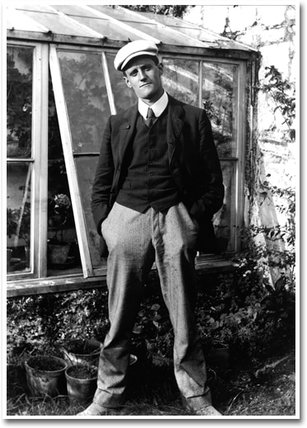
In 1909, James Joyce, leading light of the modernist movement, lived in Italy with his family. In October of that year, Joyce travelled back to Dublin on a business trip that would last until late December. During that time, Joyce and his wife (Nora Barnacle) wrote a series of highly charged, erotic letters to one another. Sadly, Nora's side of the correspondence is lost, but Joyce's own contribution to the conversation more than makes up for it. His letters are explicit, frequently obscene, intimate, tender and filthy as hell. When it comes to the art of talking dirty, Joyce is the master and will make your most racy sexting feel like a rhyme from Mother Goose; don't say you weren't warned*.
*Seriously, these letters contain descriptions of coprophilia and scatology. If you think letters from the author of Ulysses to his wife, written over a century ago, will be a little cheeky at best - you are in for a bumpy ride. This will be some of the most explicit prose you have ever read. You have been warned.
Emma Rees is professor of literature and gender studies at the University of Chester, where she’s also director of the Institute of Gender Studies. Her book, The Vagina: A Literary and Cultural History came out in paperback in 2015.

Just over a year ago I was invited on a short book tour of Florida. It was only my second time in the States and it was a culture shock in many ways (not least in terms of the near-ubiquitous media coverage of an utterly improbable presidential candidate called Donald Trump). The tour took me from the west coast, via Alligator Alley to the east coast and Miami. It was here that, in a supermarket, I saw a strong household cleaner on the shelves, its reverse-side packaging crammed full of safety warnings about its toxicity, and its front-side showing the brand’s name – Lysol – in a cursive script that was eerily familiar. For part of my talk – ‘Vulvanomics’ – that I was touring then, and still regularly present, looks at the lineage of misogyny that runs through the attempts of major global companies to monetise a pervasive cultural fear of women’s genitals.
|
Sex History ContentsIf you would like to submit an article, please fill out a submission on the Contact page Archives
September 2020
|








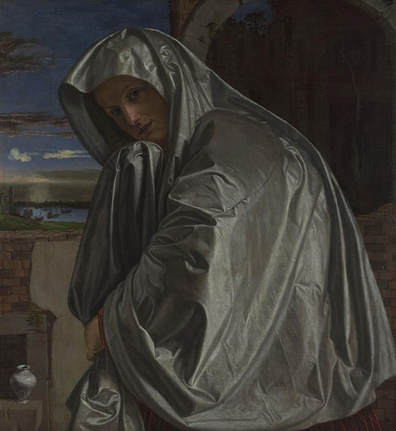


 RSS Feed
RSS Feed